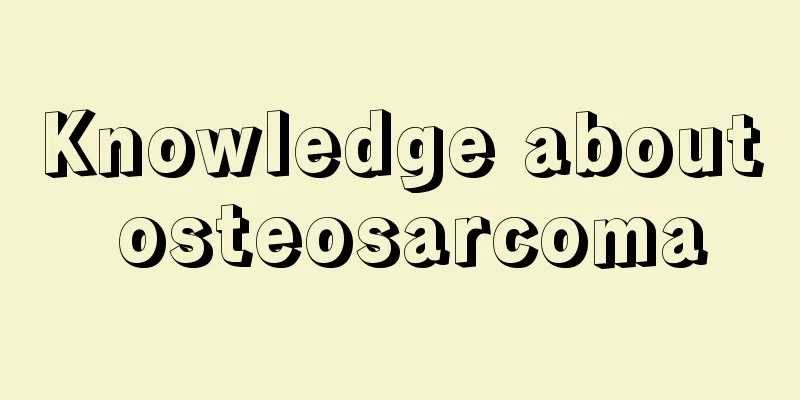What are the examination items for nasopharyngeal carcinoma

|
Nasopharyngeal cancer can cause great harm to people's bodies, and the examination of nasopharyngeal cancer is an indispensable part of the treatment process of nasopharyngeal cancer. So, what are the examination items for nasopharyngeal cancer ? Let us take a look at the examination of nasopharyngeal cancer. 1. X-ray examination of nasopharyngeal carcinoma: X-ray examinations of nasopharyngeal carcinoma patients can help understand the extent of the tumor and the destruction of the skull base, which is helpful for staging nasopharyngeal carcinoma, formulating radiotherapy plans, following up patients and evaluating prognosis. Commonly used X-ray examinations include lateral nasopharyngeal films and skull base films. 2. Radionuclide bone imaging diagnosis: Radionuclide bone imaging is a non-invasive and highly sensitive diagnostic method. In the examination of nasopharyngeal carcinoma, it is generally believed that the positive coincidence rate of bone scan in diagnosing bone metastasis is 30% higher than that of X-ray film, and lesions can be detected 3-6 months earlier. 3. CT examination: CT examination of nasopharyngeal carcinoma can help us understand the location of the tumor in the nasopharyngeal cavity, whether the lumen is deformed or asymmetric, and whether the pharyngeal recess is shallow or blocked. In addition, it can also show the invasion outside the nasopharyngeal cavity, such as the nasal cavity, oropharynx, parapharyngeal space, submental fossa, carotid sheath area, pterygopalatine fossa, maxillary sinus, ethmoid sinus, orbit, intracranial cavernous sinus, and whether there is metastasis in the posterior pharyngeal and cervical lymph nodes. Nasopharyngeal endoscopy has outstanding value in the diagnosis of tiny tumors in the cavity, while X-ray films and CT often cannot find such tiny tumors; however, most of the posterior wall and lateral wall tumors are submucosal invasive growths, which are difficult to be found by nasopharyngeal endoscopy, but can be clearly shown by lateral nasopharyngeal films and CT. CT shows lateral wall tumors more clearly than X-ray films. 4. B-type ultrasound examination: B-mode ultrasound examination has been widely used in the diagnosis and treatment of nasopharyngeal carcinoma. The method is simple, non-invasive, and patients are willing to accept it. In nasopharyngeal carcinoma cases, it is mainly used to examine the liver, neck, retroperitoneal and pelvic lymph nodes to understand whether there is liver metastasis and lymph node density, whether there is cysticity, etc. This is one of the examinations for nasopharyngeal carcinoma. The above is the introduction of nasopharyngeal cancer examination, for your reference only. Experts hope that everyone can choose a regular hospital to receive nasopharyngeal cancer examination to avoid serious consequences. In addition, if you have any questions about nasopharyngeal cancer examination, please consult online experts! |
<<: Introducing the symptoms of pancreatic cancer
>>: What are the factors that induce esophageal cancer
Recommend
Knowledge about liver cancer prevention
"One third of cancers are preventable, one t...
What is the difference between a hamartoma and a malformation tumor
The differences between hamartoma and hamartoma m...
What should I do if I have a neuralgia caused by a cold?
Colds are a common problem for everyone. Once a c...
Carbonated drinks may induce esophageal cancer
Many people like to drink carbonated drinks, but ...
What are the dangers of hemolytic streptococcal infection?
Hemolytic streptococcal infection can cause great...
Homemade foam insulation box
Insulated boxes are widely popular in daily life ...
What are the absolute risk factors for prostate cancer
The cause of prostate cancer has not yet been ful...
The difference between cardia cancer and gastric cancer
Although both gastric cancer and cardia cancer ar...
Why are my arms and calves itchy
Itching of arms and legs is a very common disease...
What to do if you have a stuffy nose and runny nose due to a cold in summer
In life, the most common disease we encounter is ...
How to use a nose plug for swimming
When people swim, they not only need to wear earp...
Wrong sleeping posture makes lower body fat
Many people do not want to lose weight normally, ...
What Chinese medicine should patients with rectal cancer take to treat
Rectal cancer is a malignant tumor caused by the ...
Why do my legs twitch when I sleep
The purpose of sleeping is to allow the body to c...
What to eat the next day after staying up late
For adults, a healthy amount of sleep should be b...









